1
/
8

Proper way to torque lug nuts
Did you know there's a right way and a wrong way to tighten lug nuts? Most people think tighter is better. Not true. Overtightening lug nuts is the No. 1 cause of warped brake rotors (called "brake rotor lateral run-out"). Warped rotors cause pedal pulsation and can increase your stopping distance. Overtightening can also break wheel studs. The stud itself doesn't cost much, but the labor to press out the old stud and insert the new one can cost as much as $75. Spin the lug nuts on by hand. Never coat the stud with grease, oil or anti-seize. Lower the jack only enough to bring the tire into contact with the road. Tighten each nut to half the specified torque. Then lower the vehicle completely and tighten each nut to full torque.
2
/
8
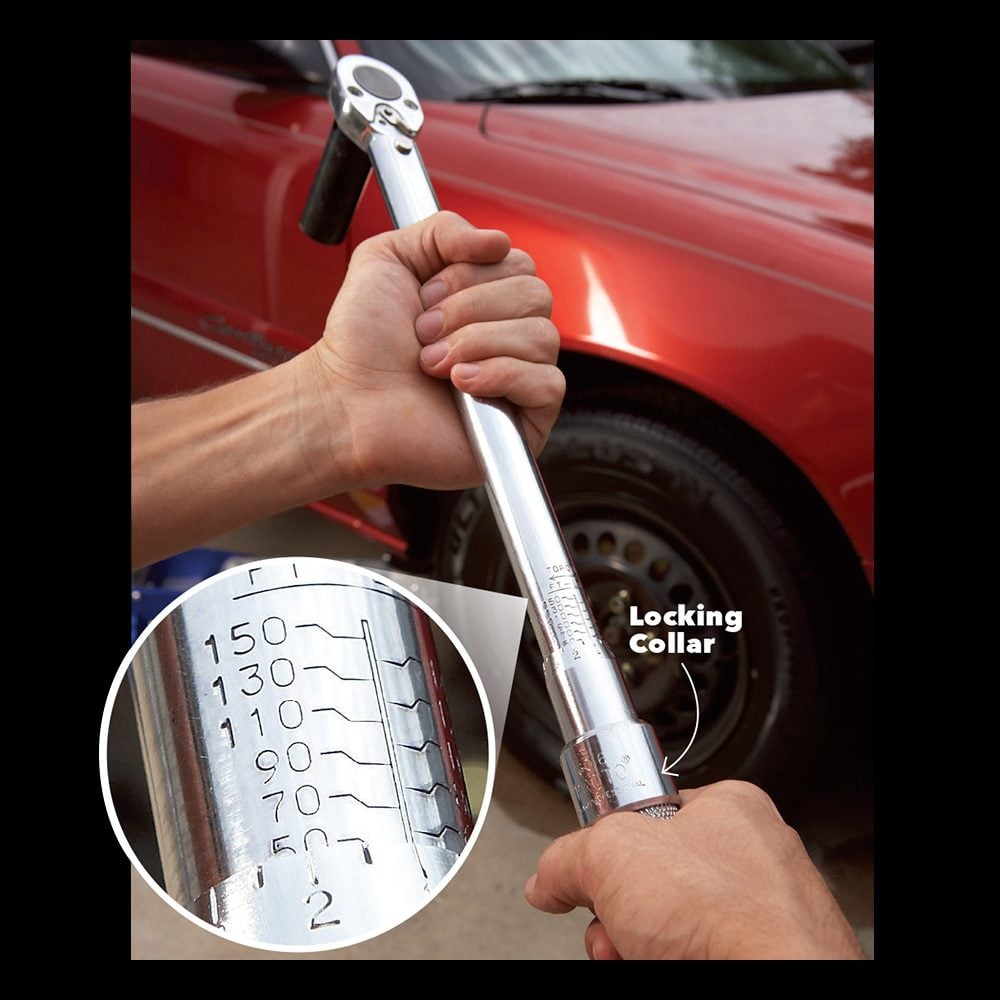
Adjust the torque on your wrench
1. Consult your owner's manual or a shop manual and set your torque wrench to one-half the recommended torque specification. 2. Reset the wrench and tighten each nut to full torque. Move the socket from one nut to the next in a star-shaped sequence.
3
/
8
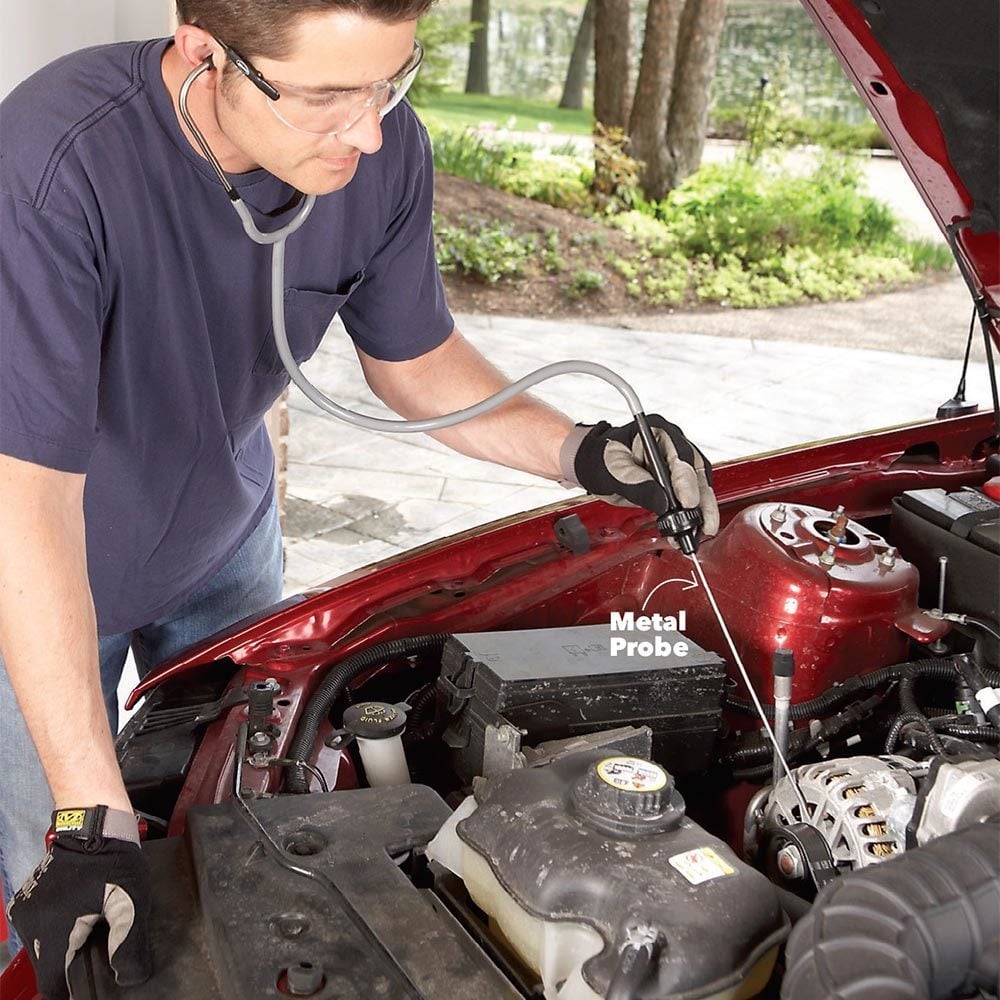
Listen to your vehicle
Diagnose chirps and squeals with a stethoscope Caption to go with image: Touch the scope's metal probe to the nonrotating part of the suspect component. If it's worn, you'll hear an unmistakable metallic sound.
4
/
8
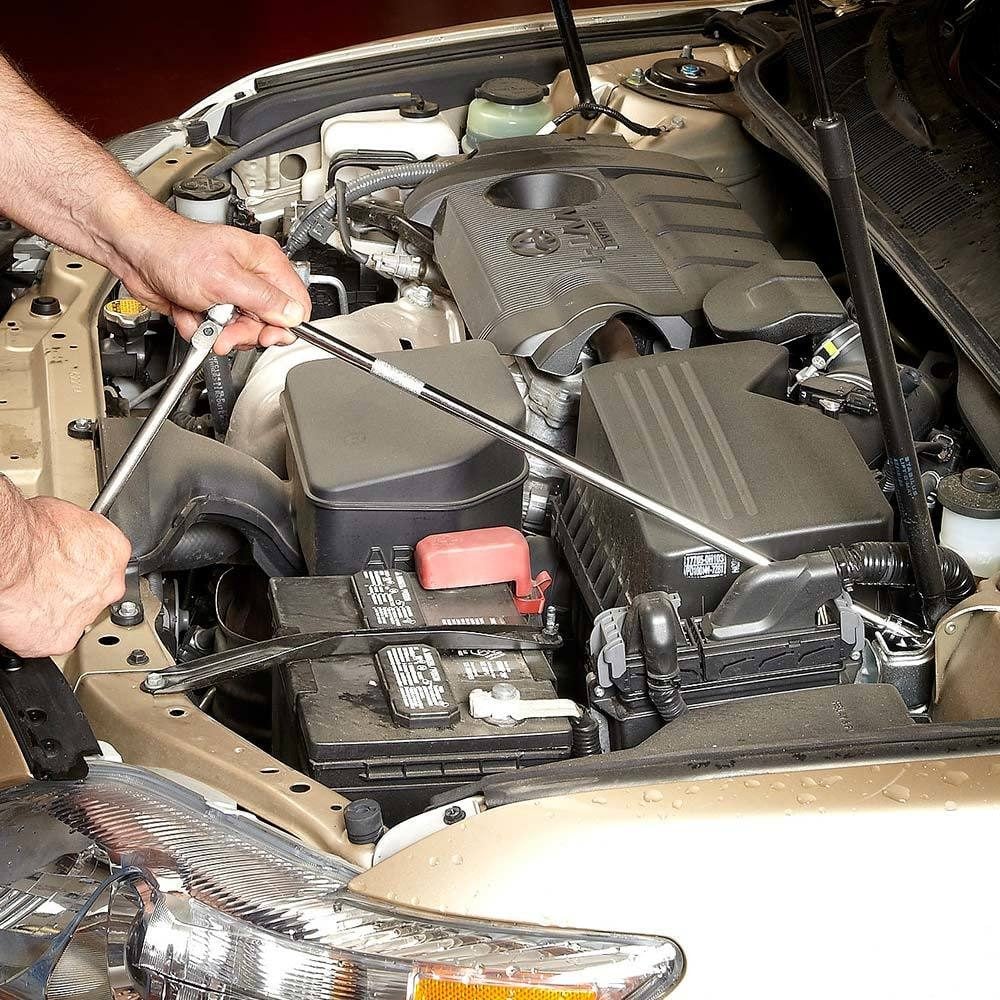
Save your back with a 20-in. extension bar
When you're leaning over the fender and elbow deep into a tune-up, the tool you want is a 20-in. extension bar. It'll save your back every time. Just snap your socket onto the end and ratchet away—while standing. The Kobalt 20-in. Extension (No. 337368) is at Lowe's.
5
/
8
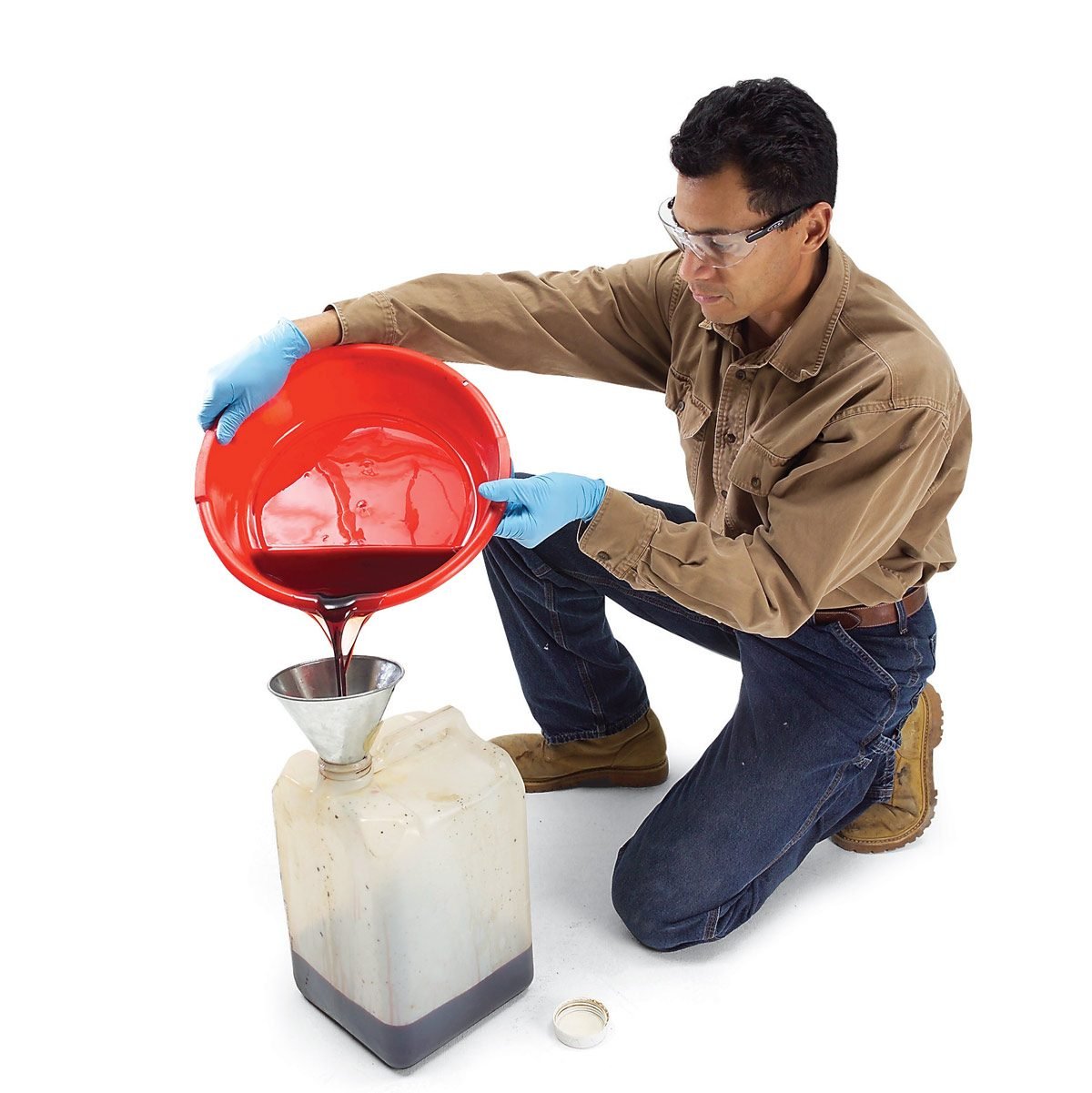
Great Way to Store Used Oil
Storing used motor oil is a hassle. Here's a tip: Restaurants order liquids such as cooking oil and soy sauce in 5-gallon jugs. Next time you're out to eat, ask if you can have a few empty jugs. Rinse them and use them to store several changes' worth of used oil between trips to the recycling center.
6
/
8
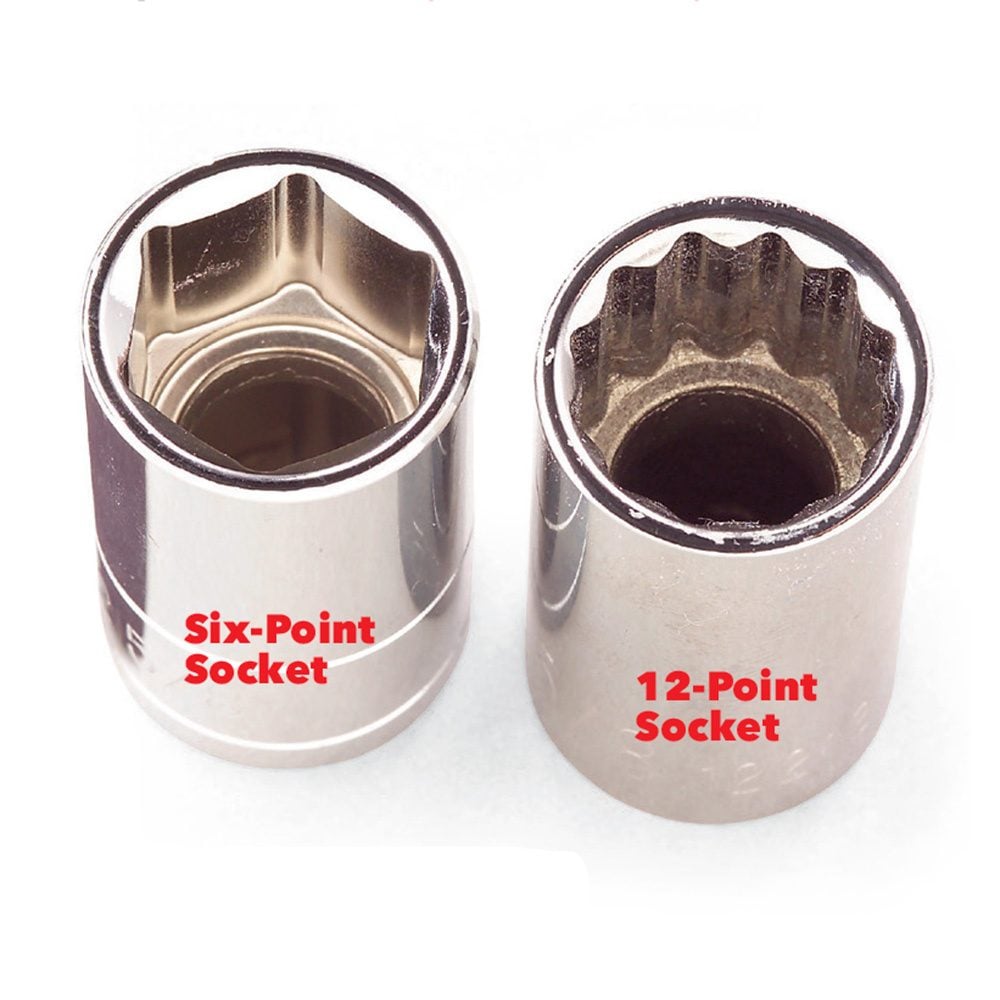
Six-point vs. 12-point sockets Q and A
Q: My gearhead neighbor keeps telling me I should quit using my 12-point sockets and buy a set of six-points. Is this really necessary?
A: A 12-point socket is fine for most lightweight repairs, but heavy wrenching calls for a six-point socket. A six-point socket is much less likely to slip off a stubborn fastener or round over the corners. Here's why: (1) Six-point sockets have thicker walls, so they're less likely to flex. (2) A six-point socket is designed to contact the head of a fastener well away from the corners so contact is made on the thickest part of the socket and the flattest part of the fastener. This dramatically reduces the likelihood of slippage and rounding over the corners. And (3), the edges of a socket are angled back a few degrees to allow the socket to slide easily over a fastener. The angle on a six-point socket is less than on its 12-point counterpart, again providing more contact area inside the socket.
One last point. Most high-quality sockets are chrome plated to prevent rusting and make cleanup easy. How-ever, after years of use, the chrome finish can flake off. Don't use a socket if the chrome is peeling. The chrome will be as sharp as a razor blade. Any reputable tool company will replace a tool that has peeling chrome.
7
/
8
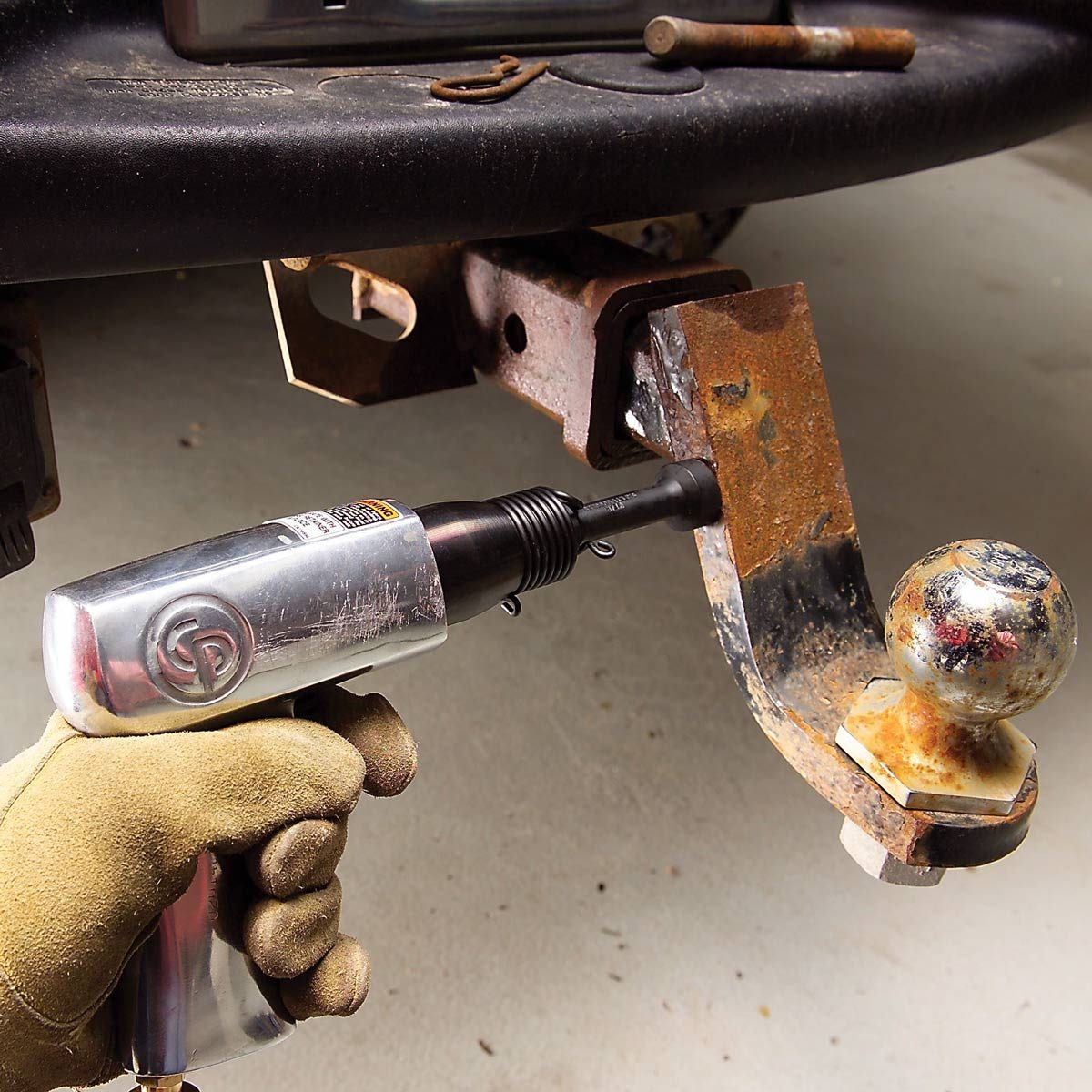
Free Up a Stuck Trailer Hitch
When the ball mount on your trailer hitch is rusted in place, don't whack at it with a sledgehammer. Here's what to do instead. Buy a can of penetrating oil ($6) and an air chisel fitted with a "hammer" bit. The air chisel will run about $15 and the extra bit will be about $8.
Spray the opening to the hitch receiver. This newest style of penetrating fluid chills the metal, causing it to contract to help break the rust seal. Then use an air chisel fitted with a hammer bit to knock everything loose. The air hammer will break up the rust, spread the penetrant and free up the ball mount. Once it's free, just tap out the rusted ball mount with a regular hammer. If you plan to reuse the rusty mount, coat it with a rust converter or waterproof marine grease. Check out these great trailer upgrades!
8
/
8
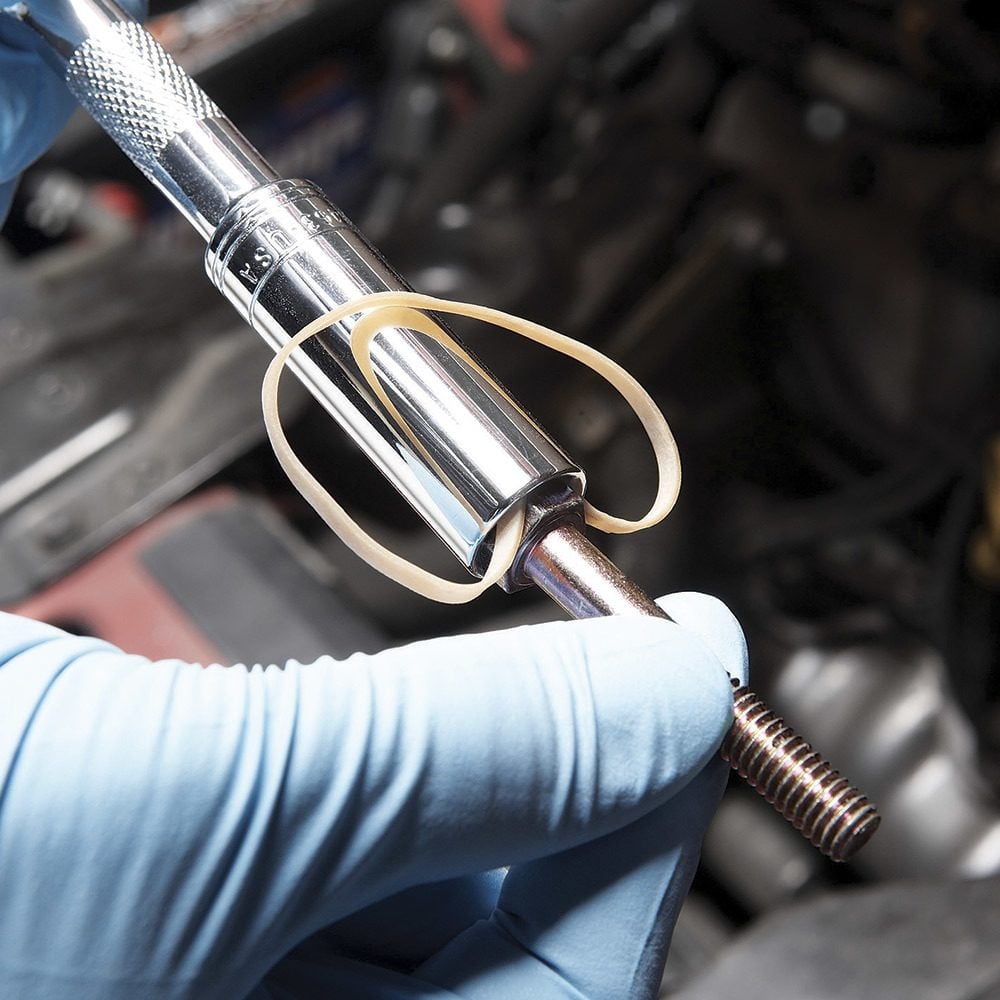
Rubber-Band Bolt Holder
Mechanics often use special magnetic inserts in sockets to prevent the bolt from falling out while they try to thread it into a tight spot. You don't need to waste money on those gadgets. Simply cut a rubber band into strips and lay a strip across the opening of the socket. Then insert the bolt head. The rubber band will wedge the bolt head in the socket, allowing you to start threading without losing the bolt.